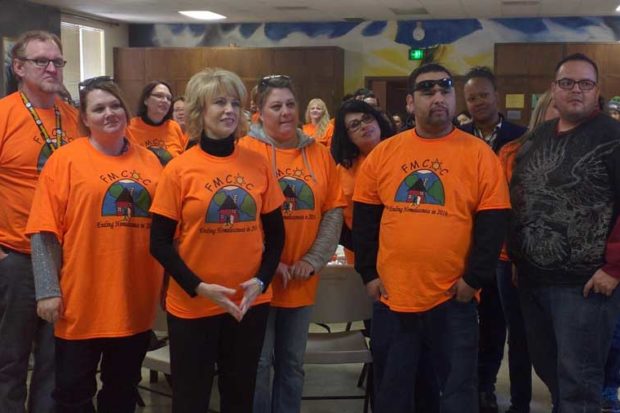
By Gerry Bill
To no one’s great surprise, Fresno’s 10-Year Plan to End Homelessness has failed miserably in achieving its stated goal— to end chronic homelessness in Fresno. The plan was adopted jointly by the City of Fresno and Fresno County in 2008. As we enter 2018 and approach the 10th birthday of the plan, maybe it is time to take stock of where we are in the struggle to end homelessness.
As recently as January 2016, in an interview with Jeffrey Hess of KVPR, then Mayor Ashley Swearengin proclaimed that Fresno was two years away from eliminating long-term homelessness in the city, which she referred to as “functional zero.” Really? That means we should be down to functional zero this month—January 2018.
Guess what? It isn’t happening. Homelessness is on the rise in Fresno. There have been up-and-down fluctuations over the past 10 years, but we are currently in an upswing. A word of caution. This is all based on a seriously flawed method of counting homeless—the annual point-in-time (PIT) count, which is done every January. As flawed as it is, the count is the only official number we have to go by. It is a serious undercount, and the actual numbers are probably at least four times higher than the PIT count. In this article, we will use the PIT numbers and let the reader multiply by four.
What do the numbers say? In the category of unsheltered homeless (people living on the streets), they numbered 1,512 in 2007, the year before the 10-year plan began. In the 2017 PIT count, that number was 1,529—slightly higher, but almost identical. There was a big fluctuation that occurred between those two points. Unsheltered homeless in Fresno reached 3,822 in 2011 and 2012, during the height of the Great Recession. So now we are back to pre-recession levels, which is where we were before the 10-year plan was adopted. Is that really progress?
The numbers for another category, the chronically homeless (homeless for a year or more), look marginally better at first glance, but are still nothing to crow about. In 2007, they numbered 941 and by 2017 had dropped to 692. That sounds like motion in the right direction. But digging deeper, it turns out that the numbers are actually rising. They hit a low point of 368 in the 2015 count but jumped to 546 in the 2016 count and are at 692 in the most recent count.
The city’s go-to homeless expert, Barbara Poppe, has predicted that if nothing is done to change the trajectory the number of chronically homeless in Fresno will nearly double in the next three years to a projected 1,274 in 2020. That would be substantially higher than the 2007 number of 941, right before the 10-year plan began. It appears that we are going backward.
I had the dubious pleasure of attending a workshop on homelessness led by Poppe last November. Poppe is the former executive director of the U.S. Interagency Council on Homelessness, a position she held for five years. The local workshop was organized by the Fresno Housing Authority and was hosted by the Central Valley Community Foundation, now headed by the former Mayor Swearengin. I expected it to be just a lot of “community leaders” congratulating themselves on what a good job they were doing, but to my surprise, Poppe soon burst that bubble.
Poppe was there to critique current practices, and she made some good points. Besides predicting a doubling in chronic homeless in three years if things are not done differently, she pointed out some crucial weaknesses in current practices.
She faulted Fresno for not really having an emergency shelter—scandalous for a city of our size. She said our community is extremely under-resourced when it comes to helping people get off the streets.
She also criticized Fresno for not having a good strategy for diversion, that is, helping people at the point where they are about to become homeless as a way of preventing them from falling into homelessness. She said that early intervention is one of the most cost-effective approaches of all, but we don’t really have it in Fresno.
I fear Poppe’s recommendations will fall on deaf ears. They all cost money up-front. She pointed out that these measures actually would save money in the long run because the costs of dealing with large numbers of homeless people are enormous. She estimated that if Fresno created 950 housing units for the chronically homeless, the annual savings would be $8.7 million–$17.2 million per year (after deducting the $7.4 million per year to operate the 950 units). It makes cents and sense, but the political will to do it does not seem to be there.
Short-term expediency always seems to trump long-term solutions to our chronic problems. As 45 would say, “Sad, very sad.”
*****
Gerry Bill is emeritus professor of sociology and American studies at Fresno City College. He is on the boards of numerous nonprofits in Fresno, including the Eco Village Project of Fresno/Dakota EcoGarden, which provides transitional housing for the homeless using an early intervention model. Contact him at gerry.bill@ gmail.com.
